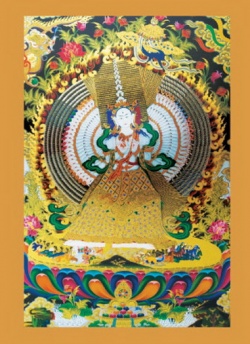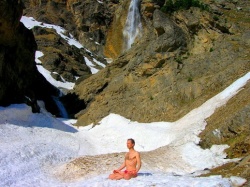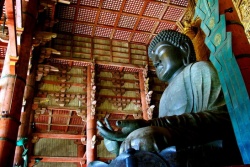The Inner Kālacakratantra - A Buddhist Tantric View of the Individual: Preface
The Inner Kālacakratantra
A Buddhist Tantric View of the Individual
A. Wallace
Preface
The Kālacakratantra and its commentarial literature are a rich textual source for the study of diverse but mutually related fields of South Asian studies in general and of South Asian Buddhism in particular. The works that belong to the Kālacakra literary corpus warrant careful research for several reasons. They express the doctrinal and social theories and the relevant tantric practices that were characteristic of north Indian Buddhism in its final stages. A study of those theories and practices reveals the ways in which the Indian tantric Buddhists from the early eleventh century on interpreted and further developed earlier Buddhist ideas and their practical applications. The Kālacakratantra literature also sheds light on the religious and social conditions of eleventh-century India in general and on the social standing and role of Indian tantric Buddhism of that era in particular.
For these reasons, a main focus of this book is on the Kālacakra tradition as an Indian Buddhist tradition. Although the Kālacakra tradition has been a significant component of Tibetan Buddhism to this day and has produced a large body of tantric literature in Tibet, for a number of reasons the intended task of this book is not to provide a detailed analysis of the Indo-Tibetan Kālacakra tradition as a whole. The Kālacakra tradition as a whole includes a plurality of texts and interpretative perspectives, some of which are not in agreement with each other; and it deals with an extensive variety of topics, which deserve separate scholarly analyses. Likewise, the diverse and complex historiographical, textual, and philosophical problems surrounding the Kālacakra literature of both India and Tibet, which should be addressed in great detail, require a collaborative effort of scholars who are willing to undertake such a task.
The central topic of this book is the Kālacakratantra's view of the nature of the individual and one's place in the universe and society. Accordingly, a primary theme of the book is a textual, historical, and philosophical analysis of the second chapter of the Kālacakratantra, called the “Chapter on the Individual” (adhyātma-patala), and its principal commentary, the Vimalaprabhā. However, since the Kālacakra tradition's theory of the human being permeates all the chapters of the Kālacakratantra, the second chapter of the Kālacakratantra is intimately related to the other chapters of this tantra. For example, the Kālacakratantra's view of the individual is inseparable from its view of the universe as discussed in the first chapter of the tantra. Likewise, the purpose of the Kālacakratantra's presentation of the individual's psycho-physiology in the “Chapter on the Individual” becomes clear only when examined in light of the tantric yogic practices described in the third, fourth, and fifth chapters. Therefore, in this book the topics of the inner Kālacakratantra are dealt with in their relationship to the larger context of the Kālacakratantra's theory and practice.
In accordance with the Kālacakratantra's theory of nonduality, this book analyzes the Kālacakra tradition's view of the individual in terms of the individual as cosmos, society, gnosis, and the path of spiritual transformation. For this reason, the main chapters of this book are entitled the “Gnostic Body, ” the “Cosmic Body, ” the “Social Body, ” and the “Transformative Body. ”
Santa Barbara, California
August 1999
Acknowledgements
I owe a great debt of gratitude to the Fetzer Institute, and especially to the former director of the research program there, Professor Arthur Zajonc, for its generous financial support, which enabled me to continue the research and writing that I initially started during my graduate studies at the University of California in Berkeley. My former professors and distinguished scholars in the Department of South and Southeast Asian Studies and in the Department of East Asian Languages and Literature at the University of California, Berkeley, prepared me for this work and facilitated my initial research and writing of this book. I am very grateful to Ms. Cynthia Reed, editor at Oxford University Press, who believed in me and in this project long before it was finished. I also wish to express my appreciation to the editors at Oxford University Press, especially to Mr. Robert Milks and Mr. Theodore Calderara, for their meticulous work and graciousness.
I am also greatly indebted to Mr. Calvin Smith for his patience and endurance in the painstaking task of proofreading the manuscript and correcting the awkward expressions to which I as a nonnative English speaker am prone. I thank him for all the hours that he spent in making and adjusting the graphics in the book. My sincere gratitude also goes to Mr. Brian Bailey for his professional help in creating the graphics for chapter 7 on the “Cosmic Body” and to Mr. David Reigle for his generosity in providing me with copies of the Sanskrit manuscripts.
I would like to express my heartfelt gratitude to my husband, Alan Wallace, for reading the manuscript and offering his useful comments, for supporting me in my work, and bringing light to the darkness of my ruminations. Finally, I wish to thank my daughter, Sarah, for her enduring love that inspires all my worthy endeavors.
Continue reading
- The Inner Kālacakratantra - A Buddhist Tantric View of the Individual: Preface
- The Inner Kālacakratantra - A Buddhist Tantric View of the Individual: Introduction
- The Inner Kālacakratantra - A Buddhist Tantric View of the Individual: The Broader Theoretical Framework of the Kālacakratantra
- The Inner Kālacakratantra - A Buddhist Tantric View of the Individual: A History of the Ṣaḍ-aṅga-yoga of the Kālacakratantra and Its Relation to Other Religious Traditions of India
- The Inner Kālacakratantra - A Buddhist Tantric View of the Individual: The Nature of Syncretism in the Kālacakratantra
- The Inner Kālacakratantra - A Buddhist Tantric View of the Individual: The Concept of Science in the Kālacakra Tradition
- The Inner Kālacakratantra - A Buddhist Tantric View of the Individual: The Cosmic Body
- The Inner Kālacakratantra - A Buddhist Tantric View of the Individual: The Social Body
- The Inner Kālacakratantra - A Buddhist Tantric View of the Individual: The Gnostic Body
- The Inner Kālacakratantra - A Buddhist Tantric View of the Individual: The Transformative Body


